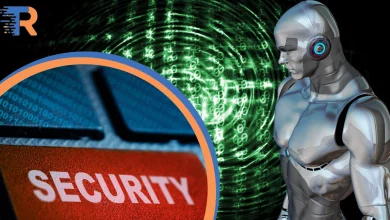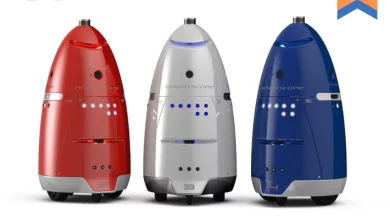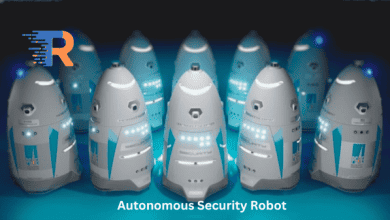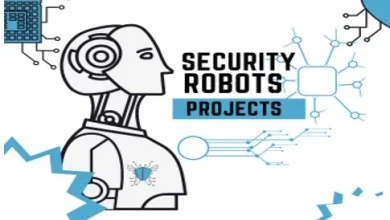
The integration of technology has altered many facets of our life in today’s ever-changing environment.
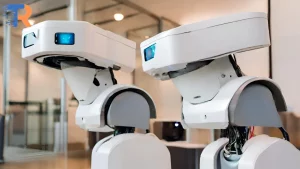 Security is one area where technical developments have had a big influence. The landscape of protecting our residences, places of business, and public areas has changed with the advent of robotic security systems. We will go further into the functions of robotic security systems in this extensive piece, including commercial security patrol robots, security patrol robots for schools equipped with firearm detection capabilities, and defense surveillance robots. In order to imagine the potential applications and advantages of these state-of-the-art security technologies in the future, we will also delve into science fiction.
Security is one area where technical developments have had a big influence. The landscape of protecting our residences, places of business, and public areas has changed with the advent of robotic security systems. We will go further into the functions of robotic security systems in this extensive piece, including commercial security patrol robots, security patrol robots for schools equipped with firearm detection capabilities, and defense surveillance robots. In order to imagine the potential applications and advantages of these state-of-the-art security technologies in the future, we will also delve into science fiction.
A Comprehensive Overview of Robotic Security Systems
Artificial intelligence, state-of-the-art sensors, and autonomous functions are combined in robotic security systems to improve security protocols in a variety of settings. These systems are used for a variety of tasks, such as patrolling, reaction, and threat and surveillance detection. These systems’ primary means of doing tasks are sophisticated robotics technologies, which allow them to operate effectively and efficiently.
Robotic Security Systems in Action
1. Initial Defense Surveillance Units:
Robots for defense surveillance are at the forefront of protecting sensitive locations and vital infrastructure. These robots can monitor and identify any unwanted activity because they are outfitted with a variety of sensors, cameras, and communication tools. Defense surveillance robots are essential for delivering real-time information and early warning systems in regions where human presence may be dangerous, such as military sites or border crossings.
2. Educational Security Patrol Robots:
One of the main concerns for educational institutions is safety, and robotic security systems have been implemented to help with this. To add an additional degree of security, school security patrol robots are designed to patrol the school grounds on a regular basis. Certain sophisticated robots are even capable of identifying weapons, providing prompt action in the event of a possible danger and augmenting the general security of students and employees.
3. Petrol Robot for Security Commercial Use:
In the business sector, it is critical to guarantee the protection of commercial properties. Office buildings, factories, and warehouses are protected by commercial security patrol robots. These autonomous patrolling robots can cover predetermined routes since they are outfitted with motion detectors and surveillance cameras. They can notify the proper authorities and give real-time video footage for examination if a security breach is discovered.
An Examination into Robotic Security Systems
There are many different types of robotic security systems, and each is made to meet particular security requirements and situations. Here is a closer look at some of the essential elements and characteristics that contribute to these systems’ efficacy:
Modern Sensors:
A range of sensors, such as motion detectors, thermal imaging cameras, and infrared sensors, are included in robotic security systems. The robots can detect movement, temperature changes, and unlawful entry thanks to these sensors, which provide important information for threat assessment.
Monitoring Cameras:
A key component of these robots’ monitoring and surveillance skills are high-definition surveillance cameras. These cameras make sure that no detail is overlooked during patrols by capturing crisp photos and videos even in low light.
Auto Search:
The capacity of robotic security systems to navigate on their own is one of its most notable capabilities. Without human assistance, these robots may navigate predetermined areas, patrolling specific routes or reacting to alerts through preprogrammed mapping and programming.
Engaging Systems:
Robotic security systems can send alarms and data in real time to a central monitoring station or other appropriate staff thanks to their sophisticated communication systems. This makes it possible to react quickly and effectively to security breaches.
AI and Machine Learning:
Over time, robotic security systems can become increasingly complex thanks to the integration of AI and Machine Learning. These technologies provide the robots the ability to see trends, adjust to shifting conditions, and make deft judgments—all essential for implementing efficient security measures.
Are Robotic Security Systems Effective?
When talking about robotic security systems, a typical question is how successful they are in comparison to more conventional security methods. The solution is dependent on the particular use case and security system needs. Robotic security systems have many benefits, but they might not be the best option for all security requirements. When assessing their efficacy, keep the following things in mind:
Affordable:
Since robotic security systems do not need recurrent pay or benefits like human security officers do, they may prove to be more affordable over time. They work around the clock, eliminating the need for several shifts.
Reliability:
Robotic security systems function consistently, removing the possibility of mistakes or attention span lapses made by humans. They are able to continuously patrol and observe locations, offering security coverage..
Scaling:
Due of their scalability, robotic security systems can be used in a variety of contexts. These systems can be customized to meet your demands, whether you need protection for a small school or a large industrial complex.
Prevention:
Potential wrongdoers or invaders may be discouraged just by the sight of robotic security systems. The knowledge that a facility is constantly being monitored by robots can deter unwanted entry.
Rapid Response:
In situations where security breaches are discovered, robotic security systems can act quickly to notify authorities or start safety procedures, cutting down on response times and lowering the likelihood of attacks.
Remote Monitoring:
Being able to monitor and control robotic security systems from a distance is one of their main benefits. This makes it simpler to react to alarms and effectively operate the robots as human operators can supervise security operations from a single place.
A Science Fiction View of Security Robots in the Future
Robotic security The term “sci-fi” describes how security robots are portrayed in science fiction books, movies, and television shows. Science fiction frequently features future and sophisticated features in security robots, like sentient artificial intelligence, holographic disguises, predictive analytics, and environment navigation. These robots might be essential to security operations, frequently obfuscating the distinction between humans and technology. Science fiction examines moral and ethical conundrums surrounding the deployment of security robots and imagines a time when these sentient machines will significantly alter the security and surveillance environment.
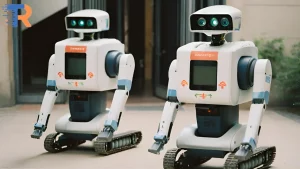
Science fiction has frequently created vivid images of a future in which robots are essential to security. Though many science fiction stories portray us as having completely autonomous robotic police forces or robotic overlords, the idea of security robots is still developing and presents interesting possibilities:
Multi-Purpose Security Drones:
Security drones have assumed new dimensions in science fiction. These drones are able to monitor big crowds, patrol huge areas, and react quickly to security issues. Their agility, adaptability, and proficiency in maneuvering intricate settings render them formidable augmentations to the security terrain..
Intelligent AI:
Security robots with sophisticated artificial intelligence that allows them to understand, ponder, and make complicated decisions on their own are a common theme in science fiction. There may be moral and ethical quandaries for these AI-powered robots, further obfuscating the distinction between humans and machines.
Visual Disguise:
In science fiction, security robots can use holographic technology to alter their appearance. Because of their ability to blend in with their environment, they are perfect for covert surveillance and clandestine activities.
Actual Predictive Analytics:
In the world of science fiction, security robots are outfitted with sophisticated predictive analytics that enable them to anticipate possible security breaches before they materialize. Then, by acting pro-actively, these robots can stop security breaches before they happen..
Ethical and Moral Challenges:
The use of security robots raises a number of ethical and moral questions that science fiction frequently examines. Is it legal for them to use force? How do they weigh the protection of people over that of property? In the field of science fiction, these queries offer stimulating fodder for contemplation.
Conclusion
The world of security and surveillance has quickly changed thanks to robotic security devices. These intelligent machines are changing the way we defend our assets and assure our safety, from defense surveillance robots that guard critical facilities to security patrol robots that protect our schools and commercial buildings. Although science fiction offers an insight into futuristic possibilities, these systems are already having positive effects in the current world.
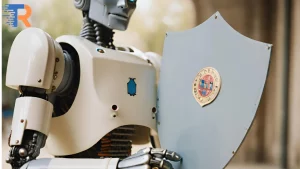
The field of robotics, artificial intelligence, and technology is constantly evolving, which means that robotic security systems have an even better future. In the end, these technologies will make our world a safer place since they will probably become even more cost-effective, efficient, and integrated into our daily lives as they develop. Adopting this cutting-edge technology guarantees a complete strategy to protecting our communities and assets in a world that is constantly changing when combined with other security measures.


